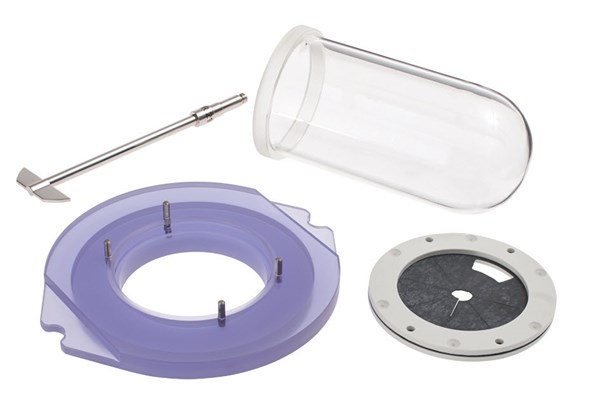Low-dose formulations and medical devices are becoming more common. For these products, typical dissolution volumes of 500 - 900 mL are too high to get appropriate analysis on UV-Vis or HPLC and smaller volumes are needed. In this post, Agilent’s US Product Specialist kenboda discusses the usage and qualification of small volume adaptions to USP Apparatus 1 and 2, as well as options for USP Apparatus 3 and 7. This conversation includes excerpts from Ken’s previous LinkedIn posts.
Low-dose drugs will sometimes require lower dissolution volumes so that the drug can be quantified. There are several options to do lower dissolution volumes with vessel conversion kits. For example, Agilent’s 708-DS has 100-, 200-, and 250-mL kits that allow operational volumes as low as 40-mL. These smaller vessels can be used with mini-paddles, mini- or standard baskets, as well as some more niche options. The advantages of these small volume kits are that they don't require purchasing a new dissolution apparatus and they can still be configured with semi-automated or online UV-dissolution systems.

QUALIFICATION OF SMALL VOLUME ADAPTATIONS
When using these kits, I recommend qualifying the base dissolution system with 1-L vessels using either the eMQ or USP PVT according to your laboratory’s internal SOPs. Qualifying the system first with the 1-L vessels ensures that the overall dissolution system is properly aligned, maintains the proper temperature and RPM, and does not have excessive vibration. Once the qualification has been done, you can exchange the standard items with the small volume items. With the small volume items now installed, it is prudent to check the alignment of the new accessories as best as possible. The following are good checks of the system before use:
• Shaft centering – measure the distance between the shaft and vessel with a calibrated ruler in the x and y directions.
• Vessel verticality – measure the exterior of the vessel with a bubble level
• Shaft verticality and wobble – measured on the shaft with potentially the same tools as the traditional shaft
NOTE: RPM, temperature, vibration, etc. would be unchanged in moving from 1-L to small volume systems.
USP APPARATUS 3 AND 7

The Apparatus 3 is a compendial system which is already at a lower volume. The standard volume of this system is 300 mL and can be operate around 175 mL effectively. This system is ideal when greater agitation is required, or pH changes are needed. In addition, the system can also be configured with 100 mL vessels and is easily connected to traditional autosamplers.
USP Apparatus 7 is a reciprocating holder system which offers 50-, 100-, and 300-mL vessel configurations, all of which are compendial. There a 2 main types of Apparatus 7 systems - an open system similar to the Apparatus 3 (Bio-Dis) above and the 400-DS system which is a very low volume (5- or 10-mL) instrument intended for low-dose drugs with long release rates. There are a variety of sample holders available which allow for testing of different types of dosage forms, such as transdermal patches, osmotic or other tablets which do not disintegrate, medical devices, and more.

The Agilent 400-DS is the lowest volume system available and can be used with either a 5- or 10-mL vessel. This system was made specifically for testing medical devices which require testing that takes several days or weeks. It has almost no evaporation loss due to the vessels being sealed, can be used at elevated temperatures, and is certified for use with alcohol-based media.

As with the traditional Apparatus 7, the 400-DS includes a variety of holders for different types of products including stents, leads, contact lenses, small implants, etc. This system has a built-in autosampler and is ideal for products with low volume requirements or extremely long dissolution tests.
IMPORTANT CONSIDERATIONS
- As with any dissolution method, small volume methods need to be robust, discriminatory, transferrable, correlated to IVIVC, etc. Method development can proceed similarly to standard volume dissolution systems with sufficient data to support the choice of adaptation for your product.
- Small-volume devices must have proper care taken in their use as with standard dissolution equipment. Evaluation should be made to ensure that the systems are reproducible, maintain a low evaporation rate, don't have excessive vibration, or any other issues which could lead to test bias or high variability.
- Evaporation is usually the biggest challenge with small-volume systems. When you're already starting off with a small volume, evaporative loss can pose an analytical challenge for proper quantification. Be sure to evaluate and consider how evaporation is controlled over the duration of your test.
For more information about small volume dissolution, you can listen to a previously recorded webinar on this topic – link to Small Volume Dissolution Webinar (recording) – or ask our experts at dissolution.hotline@agilent.com. Happy testing!
DE66634727
